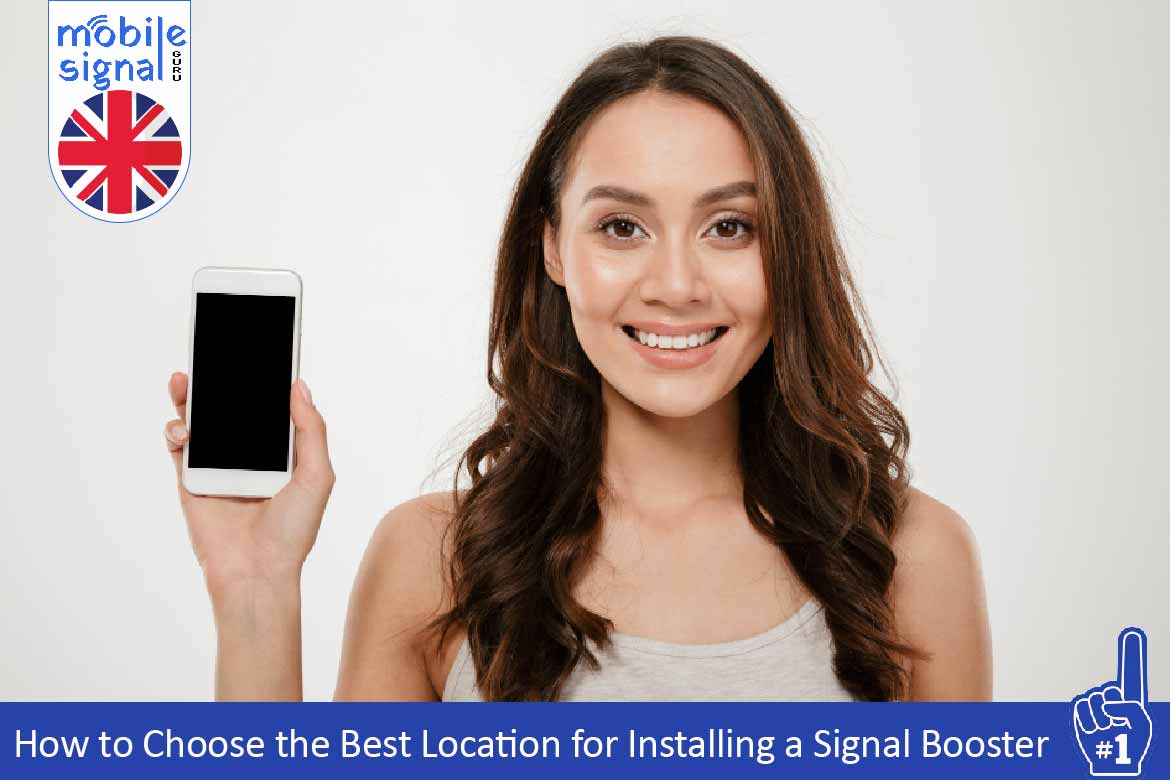Installing a signal booster can greatly improve your mobile reception, but choosing the right location is essential for optimal performance. Whether you’re facing dropped calls, slow internet, or weak signals at home or work, selecting the best location for installing signal booster will help maximize its efficiency.
This guide for UK mobile users will explain how to find the best location for installing a signal booster, with practical tips to ensure you get the strongest signal possible.
Why Location Matters for Signal Boosters
The main purpose of a signal booster is to amplify weak mobile signals. However, where you place the booster can significantly impact how well it works. A poorly chosen location may result in only slight improvements, while the right spot can give you much better coverage throughout your property. In the UK, mobile signals can be affected by various factors, such as building materials, terrain, and network congestion, making proper placement even more critical.
Key Factors to Consider When Choosing a Location
1. Identify the Strongest Signal Outside
Your signal booster needs access to the strongest available signal to amplify it. Start by walking around the outside of your building, and use your mobile phone to find where the signal is strongest. You can check the signal strength in decibels (dBm) using your phone’s settings or a signal strength app. Look for an outdoor spot where the signal strength is close to -50 dBm (excellent) or -70 dBm (good).
2. Install the External Antenna in a High Location
Once you’ve found the area with the best signal, the next step is installing the external antenna. This antenna is responsible for capturing the mobile signal before sending it to the booster. Place the antenna high up, such as on the roof, a balcony, or an external wall, to avoid any obstructions. The higher the antenna, the better the reception.
Ensure the antenna is facing the nearest mobile tower. You can use online resources like Cellmapper.net to find the direction of your closest tower based on your mobile network in the UK, whether you use EE, Vodafone, Three, O2, or any other mobile carrier.
3. Minimize Obstacles and Interference
Signal boosters work best when there are minimal physical barriers between the external antenna and the booster unit. Obstructions like trees, thick walls, and large metal objects can weaken the mobile signal. Try to place the antenna in a clear area where there are fewer obstacles between your building and the mobile tower.
Additionally, avoid placing the booster unit or internal antenna near devices that may cause interference, such as Wi-Fi routers, microwaves, or large metal surfaces.
4. Choose a Central Location for the Internal Antenna
The internal antenna is responsible for broadcasting the boosted signal throughout your home or office. To ensure even distribution, install the internal antenna in a central location. This placement will help cover a wider area and reduce dead zones within your space.
If you want to boost the signal across multiple floors, place the internal antenna in a spot where the signal can spread both horizontally and vertically, such as a hallway or stairwell.
5. Maintain Proper Distance Between Antennas
To prevent signal interference, maintain a good distance between the external and internal antennas. Installing them too close to each other can cause feedback, reducing the effectiveness of the signal boost. As a general rule, aim for at least 15 to 20 feet of separation between the two antennas. Placing them on opposite sides of walls or on different floors can also help.
6. Test Signal Strength After Installation
Once the booster is installed, test the signal strength inside your building to make sure the setup is working properly. Walk around the areas you intend to cover and check for improvements in call quality and data speed. If necessary, adjust the positioning of the internal antenna to improve coverage in weaker areas.
Additional Tips
- Check Your Network Frequency: Before installing your signal booster, confirm that it supports the frequency bands used by your mobile network provider. In the UK, most networks operate on bands 1, 3, 7, 8, 20, and n78 for 4G and 5G. You’ll want a signal booster that is compatible with these bands to ensure optimal performance.
- Understand Local Building Materials: UK buildings often use materials like brick, stone, and concrete, which can block mobile signals. If your home or office is made of thick materials, you may need a more powerful booster or additional internal antennas to cover the entire area effectively.
- Consider Rural vs. Urban Environments: In rural areas of the UK, mobile towers are often located farther apart, so you may have a weaker signal to start with. In this case, place the external antenna as high as possible to capture even the faintest signals. For urban areas, interference from other buildings can be an issue, so focus on minimizing obstacles between the external antenna and the mobile tower.
Conclusion
Choosing the best location for installing a signal booster involves understanding your current signal strength, minimizing obstacles, and placing antennas in optimal spots. By following these steps, UK mobile users can ensure that their signal booster provides maximum coverage and performance, leading to stronger calls, faster data, and fewer dropped connections.
With proper installation, you can enjoy reliable mobile service throughout your home or office, regardless of your location.
 Australia (AUD)
Australia (AUD) Denmark (DKK)
Denmark (DKK) France (EUR)
France (EUR) Germany (EUR)
Germany (EUR) Ireland (EUR)
Ireland (EUR) Malta (EUR)
Malta (EUR) Netherlands (EUR)
Netherlands (EUR) New Zealand (NZD)
New Zealand (NZD) Norway (NOK)
Norway (NOK) Spain (EUR)
Spain (EUR) Sweden (SEK)
Sweden (SEK) UAE (AED)
UAE (AED) Global Site (USD)
Global Site (USD)
